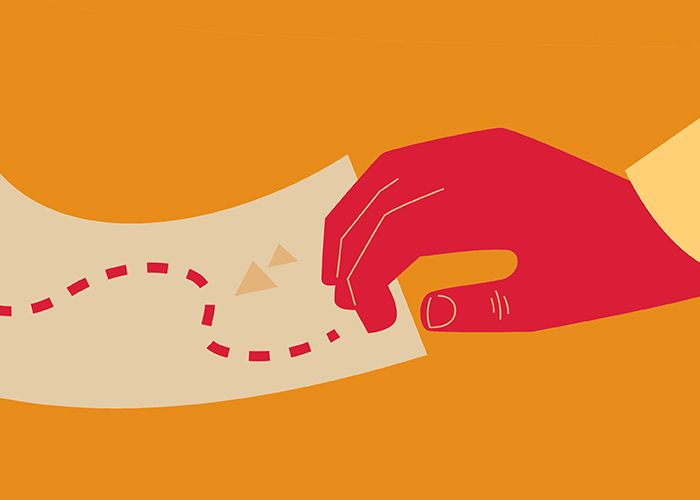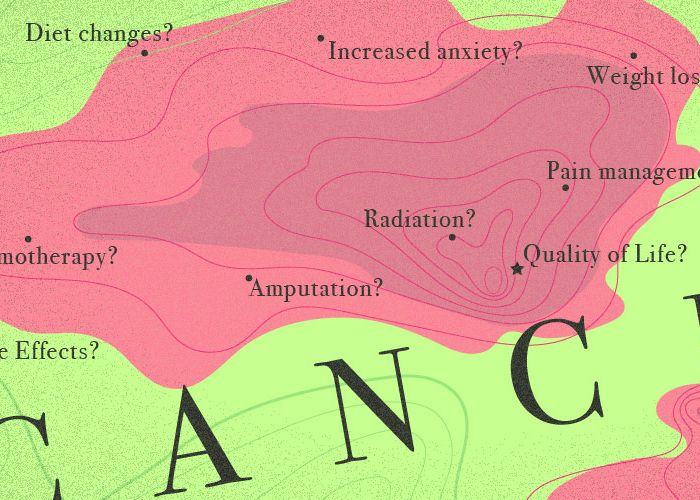

Study Finds Cat Friendly Practices Improve Diagnostic Testing in Feline Patients
Working with cats presents unique challenges to veterinary teams. The AAFP Cat Friendly Practice® (CFP) and AAFP Cat Friendly Certificate Programs were developed to assist veterinary team members in becoming better equipped to succeed in their interactions with the feline species. By improving the relationship cats and their owners have with veterinary practices, practices can be more successful with diagnostic testing for cats.
Understanding Feline Emotions and Their Behavioral Outcomes
Cats experience increased protective (negative) emotions including fear/anxiety, pain, and frustration leading up to and during their veterinary visits.1 Additionally, over 90% of caregivers surveyed reported that witnessing stress in their cat affected their own stress—with almost a third of respondents putting off veterinary visits as a result.2 In response to these protective emotions, cats will attempt to escape or hide; they may freeze, or in some situations, exhibit repulsion behaviors such as hissing, swatting, growling, and/or biting. These behavioral outcomes can limit physical examinations and success with sample collection.1,3 The caregiver's stress during their cat's experience may also impact their willingness to consent to further care such as testing.
The Benefits of Cat Friendly Practice
To earn the Cat Friendly Practice® designation, veterinary hospitals and team members are required to fulfill and follow a specific checklist of criteria aimed at minimizing protective—and promoting engaging—feline emotions. Since the CFP was first established over 10 years ago, evidence has continued to accumulate demonstrating the benefits of CFP status and practicing according to cat-friendly principles.4–9 Studies have demonstrated that gentle handling in the cat lowers the risk of protective emotions and reduces patient arousal.10–12 Cats exhibited eight times less struggling, were less likely to escape after restraint, and showed fewer postures and behaviors indicating distress.10 Cat Friendly Practices also experience lower cat-related injury rates and overall cost per workers' compensation claim, as well as other benefits related to injury reduction.7 A more recent study also determined that CFPs experience greater success with testing and screening, as well as increased diagnosis of certain common feline diseases.6
CFPs Improve Patient Testing and Screening
This study compared the diagnostic testing behavior of CFPs with non-CFPs. Using data available from a large commercial lab and practices with practice management information systems linked to the lab, the investigators were able look at financial and clinical findings data from practices meeting study inclusion criteria. Pre- and post-pandemic financial data from 320 CFPs was compared with financial data from 4195 non-CFPs. Non-CFPs were matched to CFPs based on having a proportion of feline visits over 20%, and clinical findings data with 239 CFPs were matched at 1:7 clinics by visit count with 1673 non-CFPs.
The average revenue at CFPs was found to be 20% and 17% higher compared to non-CFPs, pre- and post-pandemic, respectively. The average revenue for clinical visits including any diagnostics was also higher in CFPs. While there was no difference in the number of wellness visits between CFPs and non-CFPs, CFPs had higher mean visits per year per patient. The financial analysis revealed an increased proportion of cats in CFPs with any type of diagnostics performed, including blood testing, imaging, fecal testing, and urine testing both at clinical and wellness visits.
The clinical findings analysis portion of the study expanded on the assessment of testing by examining four categories: complete blood count, biochemistry, Total T4 (TT4), and urinalysis. Testing during clinical visits was 12% higher in CFPs. CFPs also had higher odds of having patients with more than one visit that included bloodwork or urinalysis. During each diagnostic visit, CFPs were significantly more likely to include two, three, or all four testing categories, and less likely to include only one testing category. Compared to non-CFPs, CFPs were more likely to have a result within the reference interval (RI) for most analytes, however, CFPs also identified a significantly higher number of cats with abnormal results associated with endocrine, kidney, and electrolyte changes. Endocrine category abnormalities were almost completely driven by TT4 concentrations in the borderline high range or above the RI upper limit. Without cat-friendly practices put in place, these pets may not have received the testing and resulting care they needed.
The Results of Increased Diagnostic Testing Thanks to CFPs
The success CFPs demonstrated in diagnostic testing, patient screening, and abnormality identification originates in better Cat Friendly interactions and handling as well as a more Cat Friendly environment. By following Cat Friendly principles, CFPs are better equipped to minimize protective emotions. For example, by offering hiding options such as a warm blanket sprayed with synthetic feline pheromones during a physical examination, CFPs provide cats with a coping mechanism for their fear/anxiety, thus reducing negative behavioral outcomes.
CFPs also strive to promote engaging emotions in cats by offering favorite treats or desired physical rewards, such as being pet by their owner. Successful pursuit of diagnostic testing, including pet owner consent and sample collection, requires both confidence in the veterinary team from the caregiver and a patient who is experiencing a positive veterinary visit. Increased normal findings and early abnormalities support a successful preventive care strategy for cats, especially as early detection of disease and more successful treatment outcomes are possible with this testing.
References:
- Rodan I, Dowgray N, Carney HC, et al. 2022 AAFP/ISFM Cat Friendly Veterinary Interaction Guidelines: Approach and Handling Techniques. J Feline Med Surg 2022; 24: 1093–1132.
- Caney SM, Robinson NJ, Gunn-Moore DA, et al. Happy cats: stress in cats and their carers associated with outpatient visits to the clinic. J Feline Med Surg 2022; 24: e551–e557.
- Heath S. Understanding feline emotions: … and their role in problem behaviours. J Feline Med Surg 2018; 20: 437–444.
- AAFP, ISFM. 10 years of Cat Friendly. J Feline Med Surg 2022; 24: 675–675.
- Mercader P. Being friendly to cats... is it worth the effort? Veterinary Focus, 2019, pp. 18–20.
- St Denis K, Saffire A, Michael H, et al. Cat Friendly Practice improves feline visits, resulting in increased laboratory testing and increased diagnosis of certain common feline conditions. J Feline Med Surg 2023; 25: 1098612X231204199.
- AAFP. Cat Friendly Practice Program reduces the risk of injury. J Feline Med Surg 2022; 24: 676–676.
- Almagro LD, Moutinho I, Oliveira VM de, et al. Impact of stress on the tear production of healthy cats. J Feline Med Surg 2024; 26: 1098612X241233116.
- Furgala NM, Moody CM, Flint HE, et al. Veterinary background noise elicits fear responses in cats while freely moving in a confined space and during an examination. Behav Process 2022; 201: 104712.
- Moody CM, Picketts VA, Mason GJ, et al. Can you handle it? Validating negative responses to restraint in cats. Applied Animal Behaviour Science 2018; 204: 94–100.
- Moody CM, Mason GJ, Dewey CE, et al. Getting a grip: cats respond negatively to scruffing and clips. Vet Record 2020; 186: 386–392.
- Moody CM, Mason GJ, Dewey CE, et al. Testing two behavioural paradigms for measuring post-handling cat aversion behaviour. Applied Animal Behaviour Science 2019; 210: 73–80.







